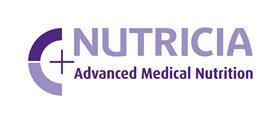An HSJ and Nutricia immersive feature explores the potential of ketogenic diets in reducing seizures in epileptic children
Read the detailed feature here
Epilepsy affects around 600,000 people in the UK, more than 10 per cent of them under 18; and for many of them it has a massive impact on their quality of life.
Sponsored by
While around two-thirds of those find their epilepsy can be adequately controlled with medications, these can come with side effects which impact on everyday life and can sometimes lead to patients giving them up. Even well-controlled epilepsy can impact on ordinary life. “A diagnosis of epilepsy can be life-changing and devastating,” says Nicola Swanborough of the Epilepsy Society. Simple things like driving a car can be difficult – epilepsy patients need to be free of seizures for a year to get a licence.
While many children develop epilepsy at a very young age, in some it develops around puberty or slightly later – often around the time an adolescent is becoming more independent and moving away from home. “Even if you have been diagnosed as a child then the age around 18 or 19 is going to be really difficult,” adds Ms Swanborough.
But life is often far worse for the third of people with epilepsy who do not respond to the different drugs which are available, including around 18,000 children. Currently, finding the right medication often involves a frustrating time trying either single drugs or combinations of drugs while continuing to suffer seizures and, in some case, brain damage from them. Epilepsy is the cause of around 1,000 deaths a year in the UK, with the majority of these without an obvious reason: young people are over-represented in this group.
Treatment gap
The Joint Epilepsy Council says that 70 per cent of epileptics could be seizure-free with appropriate treatment but only 52 per cent are. There is a treatment gap which means patients don’t get timely access to the treatments they need – sometimes because there are long waiting times for surgery and sometimes because appropriate treatments are just not made available. Delays in optimal treatment mean patients remain at risk – which can be from falls during seizures, from further brain injury and even from premature death including suicide due to psychiatric co-morbidities.
Surgery is one option for patients where drugs do not adequately control their seizures but this can be difficult if the area of the brain affected can’t be pinpointed or can’t be operated on (surgery involves either removing or isolating part of the brain). There can be long waiting lists and many people will find they are not suitable for surgery or don’t want to take the risks associated with it.
Others may consider vagus nerve stimulation which involves the implantation of a device which sends regular electrical pulses to calm down the irregular electrical activity which is behind seizures. For some people, this may not have much of an impact on the seizures and can have side-effects.
Rather than relying on glucose for energy, ketogenic diets prompt the body to use fat, producing ketones in the process – the level of ketones in the blood has to be checked regularly
The other option is adopting a ketogenic diet. These are high fat, low carbohydrate and controlled protein diets which have been shown to reduce seizures for some patients who have drug-resistant epilepsy. In 2012, the National Institute for Health and Care Excellence recommended a trial of a ketogenic diet should be considered for children who have tried two anti-convulsant drugs without success – but there is currently no recommendation for adults. However, new guidance is due out later this year which may change this position.
A trial at Great Ormond Street Hospital in 2008 showed 38 per cent of children who started the diet saw their seizures reduce by 50 per cent or more and were able to reduce medications. Subsequent studies suggest as many as 50 to 60 per cent of children with drug-resistant epilepsy could benefit. However, not everyone who tries it benefits and some people find it has side-effects which affect compliance.
Only a tiny proportion of the 18,000 children in the UK with drug-resistant epilepsy are on the diet. Availability of the service may be part of this but there may also be outdated attitudes towards the diet, which used to be regarded as difficult to follow. Rather than relying on glucose for energy, ketogenic diets prompt the body to use fat, producing ketones in the process – the level of ketones in the blood has to be checked regularly. Food intake is controlled with weighing.
Sara Garland, who founded the Daisy Garland organisation in memory of her daughter who died from epilepsy at the age of six, suggests there may have been some reluctance to recommend it among healthcare professionals because it is a food-based approach rather than a medication-based one. Ketogenic diets require commitment from the patients and those around them, and monitoring by a dietitian to ensure the patient is not missing out on vitamins and minerals – but have become easier to adhere to with changes over the last decade, including more commercial preparations.
“It can be like a miracle for some families,” says Lisa Cooke, head of paediatric nutrition, dietetics and SALT at Bristol Royal Hospital for Children. “And it reduces the need for other, very invasive, services like surgery.”


























